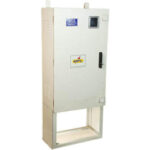We all are well aware of the importance of transformers in the electrical system. Different types of transformers are manufactured according to different uses in the power transformation industry. Voltage Transformers and Current Transformers are also considered crucial transformers, however, they both serve different purposes. In this blog, we will read about the difference between voltage transformers and current transformers to understand them in a better way.
Voltage Transformer
It is an instrument transformer that is utilized for stepping down the voltage level from high to low level. It is mainly used for offering protection to electrical devices and helps in providing accurate measurement of voltage levels during the transformation of electrical energy. They are majorly used for converting voltage levels to suitable levels that can be used for relaying and metering purposes. In other words, a voltage transformer is also known as a potential transformer. It helps in stepping up the current level.
The voltage ratio of a voltage transformer is said to be quite high and is in the ratio of 1000 to 1. Voltage Transformer consists of a primary winding with more turns, whereas its secondary winding has lesser turns in comparison to the primary winding. The device for which the voltage measurement is required is connected in parallel with the primary winding of the voltage transformer. In primary winding, the thin conductor is used whereas in secondary winding thick conductor is used.
Current Transformer
It is an instrument transformer that is utilized for stepping down the current level from high to low level. The current Transformer is utilized in protective or metering devices only for protecting or measuring accurate current levels. It helps in bringing down a current level to a safe level for carrying out several applications. It helps in stepping up the voltage level.
The current ratio of a current transformer is in the ratio of 100 to 1. The current transformer consists of primary winding with less number of turns or only one turn. Whereas the secondary winding consists of more number of turns than the primary winding. The connection between the power line or the device whose current needs to get measured and the primary winding is done in series. In primary winding, the thick conductor is utilized due to heavy current transmission, whereas secondary winding consists of a thin conductor due to low current transmission.
Though both of them are instrument transformers but Voltage Transformer is utilized for stepping down the voltage and is known as a step-down transformer. However, the Current Transformer is used for stepping up the voltage and is known as a step-up transformer. Both of them are used for the same applications that is for protection and measurement but one is used for measuring voltage and the other for measuring current level. We hope now you understand the difference between the two and can choose the right transformer according to your use. You can buy them from a reliable transformer manufacturer that is Macroplast Transformers. They are one of the most reliable transformer manufacturers offering a wide variety of transformers at the most affordable prices.



